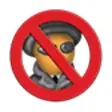I tried to send this via PM, but you have your PM's deactivated. I did it this way (start a thread) because I have no other way to reach you. I think our e-mail accounts have been compromised. Anyway, here's what I wrote in the PM:
Hey, Terry McManmon. This is for you:
Collapse
X
-
Re: Hey, Terry McManmon. This is for you:
I just got one also.
-----Original Message-----
From: Terry McManmon [mailto:gismack@sbcglobal.net]
Sent: Tuesday, November 13, 2012 4:11 PM
To: xxx
Subject: xxxx how are you
check this out (link deleted to prevent members from clicking on it)- Top
Comment
-
Re: Hey, Terry McManmon. This is for you:
If you click the link, your email will be hacked prolly within a day and spam everyone in your address book, as well as try to compromise other common sites with your account and password -- so change your password if you clicked it.- Top
Comment
-
Re: Hey, Terry McManmon. This is for you:
Yep you guys got it right. I got it from a friend and clicked on it because it said MSNBC. I figured that was OK. Bad move.
Dave,
I got too many BS messaged through PM so I turned it off. You can send me an email through this site if you want.Terry- Top
Comment
-
Re: Hey, Terry McManmon. This is for you:
Tip - run the mouse over the hyper link to display the URL it directs to if clicked on.
Hyperlinks can be made to say anything while they'll directing you to any site any where.
Example of a typical Facebook spam email
Email Mouse Over Tip_111412.jpg
Any more it's best not to click any hyper link in an email.NCRS Texas Chapter
https://www.ncrstexas.org/
https://www.facebook.com/profile.php?id=61565408483631- Top
Comment
-
Re: Hey, Terry McManmon. This is for you:
Gary, or someone........
Please delete those links in post#1 and Post#4 so that nobody clicks on it like I did!!!!
I was reading post #4 from Ken and thought it was his signature link and clicked on it yesterday. I didn't realize it was the bad link. I did not enter my email address in the link so I should be okay, but others may do that.
Ian said.....
If you click the link, your email will be hacked prolly within a day and spam everyone in your address book, as well as try to compromise other common sites with your account and password -- so change your password if you clicked it.
Ian, I'm unsure why this would happen just by clicking the link in your browser. Please explain.
Terry,
How did your email get hacked? Did you enter your email address in the link somewhere? Or just going to the link?
Rich- Top
Comment
-
Re: Hey, Terry McManmon. This is for you:
I think I understand now. If you were in your email system and clicked on the link it could grab your email and address book.
So can we assume if you click on the link in your browser you are okay?
Rich- Top
Comment
-
Re: Hey, Terry McManmon. This is for you:
Hey Michael,
The link you see is just an alias. The real link points to DO NOT CLICK THIS (link deleted to prevent members from clicking on it) DO NOT CLICK THIS. If you view the source of the page you can find it.
In fact I looked at it again and it just looks like msnbc.com the real URL is right there... maybe depends on your email system if they display the real URL.
internet sites are made of of HTML code... the M means MARKUP. What you see is only part of what is there. There's a whole gob of stuff underneath and it doesn't necessarily mean what it says, so you have to be vigilant, especially with unknown emails. I make the mistake occasionally myself, even though I know about it. Say you are working on email late at night, or having a beer... you don't always think before you click
Rich:
By clicking the link they can automagically install plugin/addins to the browser or even potentially a virus that will monitor your keyclicks. The hackers then keep it in a database and manually comb it.
Stuff like worms and viruses usually need you to actually accept a bogus dialog box though, but that's no guarantee.
Anyone that clicked the link should clear their browser cache, check their browser for any unknown addins/plugins, change their email password, And run a virus scan.
If you have passwords identical to your email password on other sites CHANGE THOSE TOO especially if they are FINANCIAL. You don't want to get your identify thieved.
The real danger isn't them spamming your address book - that's just how it spreads. They are probably watching your key clicks.
I keep my email password completely different than other passwords. Same with my bank and credit card passwords. Really every one should be different, but I'm guilty of it too.- Top
Comment
-
Re: Hey, Terry McManmon. This is for you:
Hey Michael,
The link you see is just an alias. The real link points to DO NOT CLICK THIS (link deleted to prevent members from clicking on it)DO NOT CLICK THIS. If you view the source of the page you can find it.
In fact I looked at it again and it just looks like msnbc.com the real URL is right there... maybe depends on your email system if they display the real URL.
internet sites are made of of HTML code... the M means MARKUP. What you see is only part of what is there. There's a whole gob of stuff underneath and it doesn't necessarily mean what it says, so you have to be vigilant, especially with unknown emails. I make the mistake occasionally myself, even though I know about it. Say you are working on email late at night, or having a beer... you don't always think before you click
I think you're right- my apologies. Post above removed.- Top
Comment
-
Re: Hey, Terry McManmon. This is for you:
Terry,
How did your email get hacked? Did you enter your email address in the link somewhere? Or just going to the link?
Rich[/QUOTE]
Rich,
I received the link in an email from a friend, just like all you received it from me. Usually I don't click on those kinds of things, but this one said MSNBC so I thought it would be OK. The link didn't go to MSNBC, but went to a solicitation for work at home. I promptly closed that, but it was too late. I never entered my email address, just clicking on it was enough. Firefox didn't stop it either and neither did McAfee. I tried getting rid of it with Malwarebits with no success either. I ran a McAfee complete scan last night, and changed my email password this morning. I also deleted Firefox history. I hope I have it fixed now.
Sorry for being so dumb.Terry- Top
Comment
-
Re: Hey, Terry McManmon. This is for you:
Gary, Thank you for deleting the links!!!!
Terry, Thanks. Not so dumb.....Stuff happens.
Ian, Thanks for the explanation. I ran my AV and Malware sw and all okay. I was not in my email when I clicked the link so I'm hoping I'm okay. Since Terry was logged in his email system when he went to the bad link, I'm thinking that's how it got to his email address list and sent junk out.
Rich- Top
Comment
-
Re: Hey, Terry McManmon. This is for you:
If you email is compromised
1) Change your passwords
2) Run a full virus scan
3) Scan with AntiMalwareBytes
 Download Malwarebytes latest version for Windows free to try. Malwarebytes latest update: October 10, 2025
Download Malwarebytes latest version for Windows free to try. Malwarebytes latest update: October 10, 2025
4) Scan with SuperAntiSpyware
 Download SuperAntiSpyware Free Edition latest version for Windows free. SuperAntiSpyware Free Edition latest update: January 8, 2025
Download SuperAntiSpyware Free Edition latest version for Windows free. SuperAntiSpyware Free Edition latest update: January 8, 2025
CIO article on Five Ways to Catch a Phish
With all of these convincing elements designed to spoof legitimate emails and confuse recipients, how can email users be sure messages like this one are fake? Here are five tips.
1. Hover. Whatever you do, don't click on any of the links in the email. You can and should, however, point your mouse at them and hover over them.
When we hover over the "Secure Online Chat" and "www.americanexpress.com/case" links, we see that those links don't direct to the americanexpress.com domain. One directs to a website in Italy, as marked by the .it domain. The other points to a .us domain. Links that don't go to the legitimate domain of the business are telltale signs of phishing emails.
2. Copy and paste. If you can't see the URL where the links direct when you hover over them, Peck suggests copying and pasting the link into a Microsoft Word document. Right click on the pasted link and select "Edit Hyperlink" from the menu that appears. Selecting "Edit Hyperlink" will open a pop-up window in Word that shows in the "Address" field the web address to which the link directs.
3. Investigate the email's properties. Outlook users who have opened the suspicious email can go to the "File" tab and select "Properties." In the "Properties" pop-up window that appears, Peck says to look at the box at the bottom of the window labeled "Internet headers." This box shows the path the email took to reach the end-user, he says. "Look at the originating systems. If they're not from American Express, Constant Contact or other trusted email blast systems, those are tipoffs that it's a phishing email," he adds.
4. Act on information that you know for sure is trustworthy. If your bank or credit card company is sending you an email regarding a fraud alert, you ought to see that same fraud alert on your bank or credit card company's legitimate website, says Peck. If you're at all uncertain, Peck recommends calling the phone number on the back of your credit card. "Always work on information that you have a lot more reason to trust," he adds.
5. When in doubt, throw it out. The best defense against phishing scams, Peck says, is to assume the email is untrustworthy and to pursue direct channels to businesses that you trust, such as your bank's 1-800 number.
6. Check both the “To” and “From” address boxes on the email. If the same address/person/name is in both the “To” and “From” address boxes, it’s an email scan.NCRS Texas Chapter
https://www.ncrstexas.org/
https://www.facebook.com/profile.php?id=61565408483631- Top
Comment
Comment